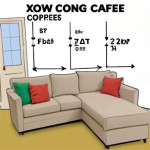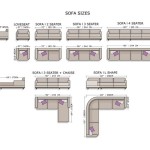What Is Sofa in Accounting?
The acronym "SOFA" in accounting typically refers to the Statement of Financial Affairs. It is a crucial document, particularly in the context of bankruptcy proceedings and personal financial planning. While not a standard financial statement like the balance sheet, income statement, or cash flow statement, the SOFA provides a detailed snapshot of an individual's or an entity's financial position at a specific point in time, often used to assess solvency and ability to repay debts.
Unlike a balance sheet, which follows the fundamental accounting equation (Assets = Liabilities + Equity), the SOFA presents information in a different format, emphasizing the liquidation value of assets and the classification of liabilities based on priority of claims. This focus on liquidation value is essential when assessing the feasibility of repayment plans during situations of financial distress. The primary objective is to determine whether the debtor has sufficient assets to satisfy their outstanding obligations. The SOFA provides creditors and other interested parties with a comprehensive view of the debtor's financial situation, allowing them to evaluate their potential recovery.
Furthermore, the SOFA is often required as part of legal or regulatory filings when a company or individual declares bankruptcy. Courts and trustees use it to determine the assets available for distribution to creditors, to identify potential fraudulent transfers, and to help formulate a reorganization plan. It also serves as a valuable tool for debtors to understand their own financial circumstances and to make informed decisions about their future.
Key Components of a Statement of Financial Affairs
The Statement of Financial Affairs comprises several key sections, each providing insight into a different aspect of the debtor's financial condition. These sections are typically structured to highlight the estimated realizable value of assets and the priority of claims of different creditors.
1. Assets: This section lists all the assets owned by the debtor, including both tangible and intangible assets. Tangible assets include items such as cash, bank accounts, real estate, vehicles, personal property, and inventory. Intangible assets might include patents, trademarks, copyrights, and goodwill. For each asset, the SOFA typically requires two valuations: book value and estimated liquidation value. Book value is the value at which the asset is recorded on the debtor's accounting records, while liquidation value is the estimated amount that could be realized if the asset were sold in a quick sale or forced liquidation scenario. The difference between these two values highlights the potential loss that creditors might incur. The liquidation value is crucial in assessing the actual amount available to creditors.
2. Liabilities: This section details all the liabilities owed by the debtor, including secured debts, unsecured debts, and priority claims. Secured debts are those backed by collateral, such as a mortgage or a car loan. The SOFA will specify the creditor, the amount owed, the collateral securing the debt, and the estimated value of the collateral. Unsecured debts are those not backed by collateral, such as credit card debt, medical bills, and personal loans. Priority claims are debts that have a legal priority over other debts in bankruptcy proceedings, such as unpaid taxes and certain employee wages. The classification of liabilities based on priority is critical, as those with higher priority must be paid in full before those with lower priority receive any distribution.
3. Exemptions: In certain jurisdictions, debtors are allowed to exempt certain assets from being liquidated to satisfy debts. Exemptions vary by state and may include items such as a primary residence (subject to certain limits), personal property, tools of trade, and retirement accounts. The SOFA will identify any assets claimed as exempt and the legal basis for the exemption. This section is important as it determines which assets are protected from creditors and remain available to the debtor after bankruptcy.
4. Statement of Income and Expenses: Although not always explicitly included, some SOFA forms may require a statement of current income and expenses. This provides insight into the debtor's cash flow and helps to assess their ability to repay debts in the future, particularly in reorganization bankruptcy cases. This section may outline sources of income, like wages, investments, or rental income, as well as recurring expenses such as housing, food, transportation, and healthcare. This information helps creditors and the court understand the debtor's ability to meet future obligations.
Purpose and Significance of the Statement of Financial Affairs
The Statement of Financial Affairs serves several critical purposes in accounting and legal contexts, particularly related to bankruptcy and insolvency. Its significance stems from its ability to provide a clear and concise picture of a debtor's financial situation, enabling informed decision-making by various stakeholders.
1. Assessing Solvency: The SOFA is primarily used to assess the solvency of an individual or entity. By comparing the estimated liquidation value of assets to the total liabilities, it is possible to determine whether the debtor has sufficient assets to cover their debts. If the liabilities exceed the assets, the debtor is considered insolvent. The SOFA provides a detailed analysis, allowing for a more accurate assessment than simply comparing the book value of assets to liabilities, which may not reflect the actual values obtainable in a liquidation scenario.
2. Identifying Fraudulent Transfers: The SOFA can help identify potential fraudulent transfers or preferential payments made by the debtor prior to filing for bankruptcy. Fraudulent transfers are transfers of assets made with the intent to hinder, delay, or defraud creditors. Preferential payments are payments made to certain creditors within a certain period before bankruptcy that unfairly benefit those creditors over others. By reviewing the SOFA, trustees and creditors can identify such transactions and potentially recover the transferred assets or payments for the benefit of all creditors. This investigation is a key component of bankruptcy proceedings to ensure fair treatment of all parties.
3. Facilitating Bankruptcy Proceedings: The SOFA is a crucial document in bankruptcy proceedings, providing the court, trustee, and creditors with essential information about the debtor's financial situation. It is used to determine the assets available for distribution to creditors, to verify the validity of claims, and to formulate a reorganization plan. The accuracy and completeness of the SOFA are critical, as it forms the basis for many decisions made during the bankruptcy process. Failure to properly disclose information on the SOFA can have serious consequences, including dismissal of the bankruptcy case or even criminal charges.
4. Supporting Financial Planning: Beyond bankruptcy, the concept of a SOFA, while perhaps not formally documented, can be a useful tool for personal financial planning. By creating a detailed list of assets and liabilities with estimated fair market values, individuals can gain a clearer understanding of their net worth and financial stability. This can help in making informed decisions about budgeting, investing, and retirement planning. While the format might differ from a formal bankruptcy SOFA, the underlying principle of assessing financial health through a comprehensive inventory of assets and liabilities remains the same.
Differences between SOFA and Traditional Financial Statements
While the Statement of Financial Affairs and traditional financial statements like the balance sheet serve the purpose of conveying financial information, they differ significantly in their focus, presentation, and use cases. Understanding these differences is crucial to interpreting the information provided by these documents correctly.
1. Valuation Basis: A primary difference lies in the valuation basis used for assets. The balance sheet typically presents assets at their historical cost or carrying value, which may not reflect their current market value. The SOFA, on the other hand, emphasizes the estimated liquidation value of assets, reflecting the amount that could be realized if the assets were sold quickly. This emphasis on liquidation value is particularly relevant in bankruptcy scenarios, where the goal is to determine the actual amount available to creditors.
2. Presentation: The balance sheet follows the accounting equation (Assets = Liabilities + Equity), presenting assets, liabilities, and equity in a structured format. The SOFA does not adhere to this equation and instead focuses on presenting assets and liabilities in a way that highlights the priority of claims. Liabilities are typically classified as secured, unsecured, and priority claims, reflecting the order in which they will be paid in bankruptcy proceedings. This classification is not always evident in a traditional balance sheet.
3. Purpose: The balance sheet is used to assess a company's overall financial position and to provide information to investors, creditors, and other stakeholders. It is a key component of general-purpose financial reporting. The SOFA, on the other hand, is primarily used to assess solvency in the context of bankruptcy proceedings or financial distress. Its purpose is to provide creditors and the court with a clear picture of the debtor's assets and liabilities, enabling them to evaluate their potential recovery.
4. Frequency: Balance sheets are typically prepared on a regular basis, such as quarterly or annually, as part of the financial reporting cycle. The SOFA is typically prepared only when an individual or entity is facing financial distress or is contemplating bankruptcy. It is a one-time snapshot of financial affairs at a specific point in time.
5. Equity: The concept of equity, a central component of the balance sheet, is less emphasized in the SOFA. While the difference between assets and liabilities could be interpreted as equity, the SOFA's primary focus is on the liquidity and realizable value of assets available to satisfy creditor claims. The focus shifts from the ownership stake (equity) to the creditor recovery potential.
In summary, while both the Statement of Financial Affairs and traditional financial statements provide valuable information about an entity's financial position, they serve different purposes and are prepared using different valuation bases and presentation formats. The SOFA is a specialized document used primarily in situations of financial distress, while traditional financial statements are used for general-purpose financial reporting.

Chart Of Accounts Nfp365

Sofa Statement Of Financial Activities

Cost Centres

Business Brainstorming And Group On Sofa With A Tablet Idea Or Strategy For Corporate Team In Accounting People Brainstorm Working Together At Work Finance Audit Fintech Collaboration Stock Photo

Housewife Calculating Accounting Holding A Receipt Sitting On Sofa In The Living Room At Home Stock Photo By Wichayada69

Doing Accounting At Home Happy Couple Using Laptop Computer Sitting On Sofa In Apartment Young Family Filling Tax Forms Mortgage Documents Bills Checks Balances Ins Are Order Stock Foto Adobe

Bookkeeping Vs Accounting A Comparison

Accounts Payables Template Aqret Accounting

Doing Accounting At Home Happy Couple Using Laptop Computer Sitting On Sofa In Apartment Ai Generated 25474052 Stock Photo Vecy

Accounting Vintage Color Print Sofa Cover Grizzping








